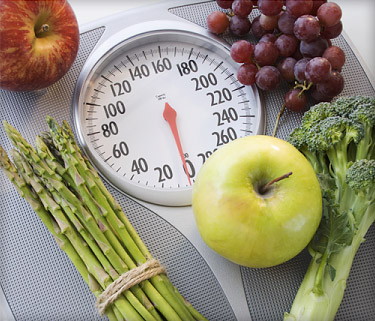In the colorful spectrum of fruits and vegetables, leafy greens stand out as nutritional powerhouses, offering a myriad of health benefits that are essential for overall well-being. From kale and spinach to collard greens and Swiss chard, these vibrant leaves pack a punch when it comes to nourishing our bodies with vital nutrients. Let’s delve into the crucial role that leafy vegetables play in a balanced diet and why they should be a staple in your meals.
- Nutrient Density: Leafy greens are among the most nutrient-dense foods on the planet. They are rich in vitamins, minerals, antioxidants, and phytochemicals, all of which are essential for supporting various bodily functions. For example, spinach is loaded with vitamin K, which is crucial for bone health and blood clotting, while kale is packed with vitamin C, an important antioxidant that supports immune function and collagen production.
- Fiber-Rich Goodness: Fiber is essential for digestive health, and leafy greens are an excellent source of both soluble and insoluble fiber. These fibers aid in digestion, promote regularity, and help maintain a healthy gut microbiome. Consuming adequate amounts of fiber can also help lower cholesterol levels, regulate blood sugar levels, and promote satiety, making it easier to maintain a healthy weight.
- Disease-Fighting Properties: The unique combination of vitamins, minerals, and antioxidants found in leafy greens offers protection against a variety of chronic diseases. Studies have shown that regular consumption of leafy vegetables is associated with a reduced risk of heart disease, stroke, certain types of cancer, and age-related macular degeneration. The antioxidants in leafy greens help neutralize harmful free radicals and reduce inflammation in the body, contributing to overall health and longevity.
- Blood Sugar Regulation: Leafy greens are low in calories and carbohydrates, making them an excellent choice for individuals looking to manage their blood sugar levels. The high fiber content in leafy greens slows down the absorption of sugar into the bloodstream, preventing spikes and crashes in blood glucose levels. Incorporating leafy vegetables into meals can help stabilize energy levels and reduce the risk of developing type 2 diabetes.
- Versatility and Flavor: One of the best things about leafy greens is their versatility in the kitchen. Whether raw, sautéed, steamed, or blended into smoothies, there are countless ways to enjoy these nutritious greens. From salads and stir-fries to soups and sandwiches, leafy vegetables add texture, color, and flavor to a wide range of dishes, making healthy eating both delicious and satisfying.
In conclusion, leafy vegetables are an indispensable component of a balanced diet, offering a wealth of nutrients and health benefits that support overall well-being. From promoting digestive health and disease prevention to regulating blood sugar levels and enhancing flavor in meals, the importance of leafy greens cannot be overstated. By incorporating a variety of leafy vegetables into your diet on a regular basis, you can nourish your body from the inside out and enjoy vibrant health for years to come.
So, why not embrace the power of leafy greens and start “going green” today? Your body will thank you for it!
Incorporating leafy greens into your diet doesn’t have to be complicated! Here are some easy and delicious ways to add more leafy greens to your meals:
- Smoothies: Blend a handful of spinach or kale into your morning smoothie. The mild flavor of leafy greens blends well with fruits like bananas, berries, and mangoes, making it an easy way to sneak in some extra nutrition without altering the taste too much.
- Salads: Add a variety of leafy greens, such as mixed greens, arugula, spinach, or romaine lettuce, to your salads. Toss in some colorful vegetables, nuts, seeds, and a lean protein like grilled chicken or tofu for a nutritious and satisfying meal.
- Stir-Fries: Throw some chopped kale, Swiss chard, or bok choy into your stir-fry for a boost of color and nutrition. Leafy greens cook quickly and pair well with other vegetables and proteins, adding both texture and flavor to your favorite stir-fry recipe.
- Soups and Stews: Add leafy greens like spinach, collard greens, or cabbage to soups and stews during the last few minutes of cooking. They will wilt down and add a nutritious element to your dish. Try adding spinach to tomato soup or kale to a hearty vegetable stew.
- Wraps and Sandwiches: Use large, sturdy leaves like collard greens or Swiss chard as wraps for sandwiches or burritos. Fill them with your favorite fillings, such as hummus, grilled vegetables, avocado, and turkey or tofu, for a nutritious and portable meal option.
- Pasta Dishes: Mix cooked leafy greens like spinach or kale into your favorite pasta dishes. They add color, texture, and nutrition to dishes like spaghetti marinara, creamy fettuccine Alfredo, or pesto pasta.
- Omelets and Frittatas: Fold chopped spinach, kale, or Swiss chard into your morning omelet or frittata for a healthy and satisfying breakfast. Leafy greens pair well with eggs and add an extra dose of vitamins and minerals to your meal.
- Smoothie Bowls: Top your smoothie bowl with a handful of fresh spinach or kale leaves for added nutrition and texture. Sprinkle with toppings like granola, fresh fruit, nuts, and seeds for a delicious and Instagram-worthy breakfast or snack.
Incorporating leafy greens into your diet can be easy and delicious with these simple tips. Experiment with different varieties and cooking methods to find what works best for you, and enjoy the health benefits of adding more greens to your meals!
Sources:
https://www.baptisthealth.com/blog/health-and-wellness/health-benefits-of-leafy-greens
https://www.ars.usda.gov/plains-area/gfnd/gfhnrc/docs/news-articles/2013/dark-green-leafy-vegetables/
https://www2.ca.uky.edu/agcomm/pubs/FCS3/FCS3567/FCS3567.pdf









